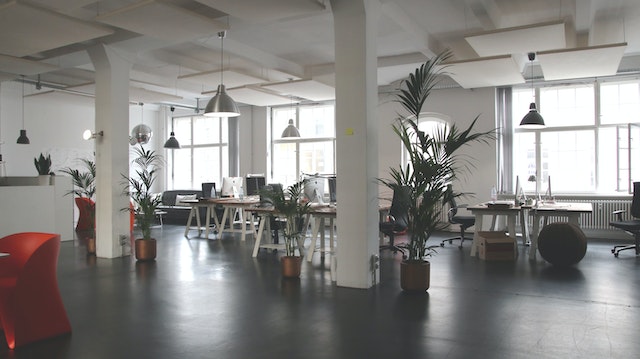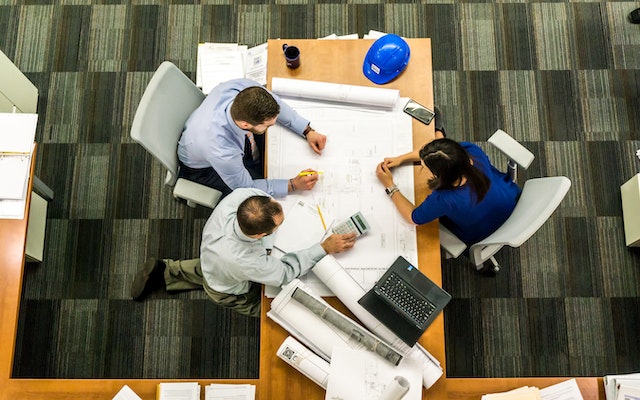The layout of an office space plays a crucial role in influencing employee productivity, collaboration, and overall satisfaction.
A well-designed office layout not only maximises the efficient use of space but also creates an environment that fosters creativity, communication, and focus.
In this article, we will explore the key considerations and best practices for designing an engaging office layout that promotes productivity and enhances the overall work experience.
Importance of Office Layout
The office layout refers to the arrangement and configuration of workspaces, furniture, and amenities within an office environment. A thoughtfully designed layout can have a significant impact on employee well-being, collaboration, and productivity.

Here are some key reasons why office layout matters:
- Workflow Efficiency: An effective office layout optimises the flow of work, minimising distractions and unnecessary movement. It should support the natural progression of tasks, ensuring employees can move seamlessly between different areas and workstations.
- Collaboration and Communication: A well-designed office layout encourages interaction and teamwork. It should provide spaces that facilitate impromptu meetings, brainstorming sessions, and informal conversations, fostering collaboration and innovation.
- Focus and Concentration: A good office layout balances open and collaborative spaces with quiet areas for focused work. Providing dedicated quiet zones or individual workstations can help employees concentrate and avoid interruptions when needed.
Designing an Engaging Office Layout

To create an office layout that promotes productivity and engagement, consider the following factors:
1. Space Planning
- Assess the available space and evaluate the needs of different teams and functions within your organization.
- Determine the optimal allocation of space for different work areas, such as individual workstations, team zones, meeting rooms, and common areas.
- Ensure that the layout allows for flexibility and adaptability as your organization evolves.
2. Zoning and Departmental Needs
- Divide the office space into zones based on departments, teams, or functions.
- Consider the specific requirements of each department and design their zones accordingly. For example, collaborative teams might benefit from open-plan areas, while departments requiring confidentiality may need private offices or dedicated meeting rooms.
3. Furniture and Ergonomics
- Choose ergonomic furniture that promotes good posture, comfort, and overall well-being. Adjustable desks and chairs, as well as supportive accessories, can enhance employee productivity and reduce the risk of musculoskeletal issues.
- Provide a variety of furniture options, including standing desks, comfortable seating areas, and breakout spaces, to accommodate different work styles and preferences.
4. Natural Lighting and Ventilation
- Maximise natural light by positioning workstations and common areas near windows. Natural light has been shown to boost mood, energy levels, and overall productivity.
- Ensure proper ventilation and air circulation throughout the office space to maintain a comfortable and healthy environment.
5. Collaboration Spaces
- Incorporate dedicated spaces for collaboration, such as meeting rooms, project areas, or informal gathering spots.
- Include appropriate technology and equipment in these spaces to facilitate effective communication and idea-sharing.
6. Breakout Areas and Relaxation Spaces
- Designate areas for employees to take breaks, recharge, and socialise. This can include comfortable seating areas, game rooms, or outdoor spaces if available.
- Providing spaces for relaxation and rejuvenation can help reduce stress, increase employee satisfaction, and promote overall well-being.
7. Branding and Aesthetics:
- Infuse your brand identity into the office design through the use of colours, signage, artwork, and visual elements.
- Choose a design aesthetic that aligns with your brand values and creates a positive and inspiring atmosphere for employees.
Summary
Designing an engaging office layout is a vital aspect of creating a productive and inspiring work environment.
By considering factors such as space planning, zoning, furniture, lighting, and collaboration spaces, you can create an office layout that enhances productivity, promotes collaboration, and supports employee well-being.
Remember that a well-designed office layout is not static, and it should evolve as the needs of your organisation and workforce change.
Ready to embrace the power of productive office design? Check out our Ultimate Guide to Office Branding to learn how to create a branded office space that enhances employee morale, improves productivity, and leaves a lasting impression on clients and visitors.
